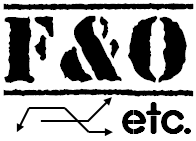|
|
As an option trader, you may have noticed that the market or stock prices isn’t moving much in any direction over a given period of time. Even though there is a slight movement up or down, it traces back to the same price levels or remains within a very small range. Can an option trader benefit from limited range or no price movements of a particular stock? The answer is YES and that's where the Short Strangle option trading comes to the picture.
Let's see the details and in-depth analysis of Short Strangle Trading in this series of articles. This strategy of trading short strangles is very similar to that of trading Short Straddles. However, there are a few minor differences which we will cover below.
A word of caution (and we'll repeat this multiple times) - Trading Short Strangles is one of the riskiest of options strategies and one must NOT get into it without a proper planning - clearly identify stop-losses and profit levels and keep a clear eye on every possible price movements in the options as well as the underlying stock.
Short Strangle Options Trading
What is a Short Strangle Option Trading?A Short Strangle Option Position is a net SELL (also called net SHORT) option position where the option trader Shorts 2 options - 1 OTM Put Options and 1 OTM Call Option. Since there are 2 sells, it is a net credit position which means that the option trader receives option premium (net inflow) from the buyers of the call and put options while getting into the Short Strangle trade. Hence it suits the trader who does not have money to trade.
However, please note that since there is shorting of options, the trader might be required to keep margin money with the options broker and this margin money amount can be considerably higher than the net option premium received from the sale of 2 OTM options. That means this Short Strangle position may actually become a net debit position - considering the requirement of margin money.
Since the option trader shorts the OTM call and put ((Want to know what is ITM, OTM, ATM in Options? See Moneyness of Options - OTM, ATM, ITM Options), the option premium amount received is low.
In which scenarios is the Short Strangle Option Trading profitable to the trader?
A trader should take the Short Strangle Option Trading position only when he/she is expecting the underlying price to remain stable and within a limited range - within the 2 strike prices of the OTM call and put options.
One should clearly avoid getting into a short strangle position when there is even a remote possibility of a big price move in either direction (upwards or downwards), then DO NOT get into the Short Strangle trade. If you are already having such a position, and such a big price movement occurs, immediately exit as per your stop-loss and trading strategy.
That means a Short Strangle should not be traded when big events or big news are expected - like company declaring quarterly results, expecting to get a big project and so on. Ideal scenario to trade Short Strangle will be when the stock is not expected to have any price movements.
For e.g., let's say GENERAL ELECTIC (GE) is trading at around $50 per share (the underlying stock price). There is nothing expected to happen to this stock/company - no news of earnings report, no outcome of any lawsuits, no problems from competitors, etc. which may result in a big price move upwards or downwards - The stock price is expected to stay around $50.
Hence, the above case for GE makes it an ideal scenario for an option trader to get into a Short Strangle Option position.
But again, keep in mind that you may loose much more than what you can earn from a short strangle trade. As we will see in the Profit and Loss Calculation section, there can be unlimited loss from a short strangle for a very limited profit potential.
Also note that you are looking for OTM options which are not going to give you very high price as option premium. So try to select the right OTM strike prices for both put and call. Try to short the options when the implied volatility is high meaning you can expect to get high prices for selling OTM call and Put.
There are 2 short positions in a short strangle, hence an option trader can expect to benefit from time decay and that is the only profit opportunity for the trader of this combination. Since time decay is fastest in the last month, one should get into the Short Strangle position when there is at the maximum one month left for expiry. (See Options Time Decay: Explained with Examples)
Also remember, you may be successful in getting smaller limited profits from a short strangle option trade for a few times. But there can be one big loss and that will take away all your cumulative profits in one shot and leave you with a big loss.
How to construct the Short Strangle Option Trading position?
A Short Strangle Option Trading position can be constructed or configured by simply selling the OTM strike Call & Put Options, with SAME expiry on the same underlying stock or index.
Usually, the strike price selected is OTM (Out-of-the-money) strike price i.e. a bit farther away from the current strike price. (Want to know what is ITM, OTM, ATM in Options? See Moneyness of Options - OTM, ATM, ITM Options)
1) 1 * OTM Short Put
2) 1 * OTM Short Call
Theoretically, here is how it looks:

Let's now head on to next part Short Strangle Options Trading Explained: Example & Payoff Functions

0 Comments: Post your Comments
Wish you all profitable derivatives trading and investing activities with safety! = = Post a Comment